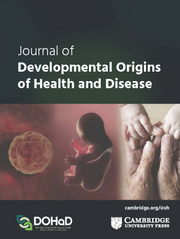No CrossRef data available.
Article contents
Birth season associates with multiple anthropometric traits in Estonian children
Published online by Cambridge University Press: 14 April 2025
Abstract
Seasonal variation in maternal exposure to sunlight during pregnancy, which relates to variation in vitamin D and other micronutrient availability for a fetus, is a prevalent explanation for the variation of offspring traits with birth season. However, little consensus exists about the pregnancy period during which the fetus is most sensitive to maternal UV exposure and which offspring traits are most sensitive. We examined the association between 11 anthropometric traits and birth season/month among 18,459–23,876 Estonian children born in 1937–62. Nine traits showed seasonal patterns, which were generally weak, compared to the effects of family socioeconomic position (SEP). Most prominent nonlinear associations between offspring traits and birth month emerged among children of mothers in unskilled manual professions. A possible explanation is that the growth of children in high-SEP families is more strongly buffered against any external exposures (including possible shortage of maternally synthesised vitamin D and essential micronutrient availability) than in low-SEP settings. For most traits, children born in spring/summer were larger than those born in autumn/winter. Hip width, trunk length and weight showed the most distinct seasonal patterns. If these birth-season-related patterns are related to maternal sunlight exposure, our results support the view that UV exposure benefits offspring growth towards the end of pregnancy. It is also possible that children born in spring and summer benefitted from the seasonally increasing nutrient availability during the first post-natal months.
Topics structure
Topic(s)
Subtopic(s)
Keywords
- Type
- Original Article
- Information
- Copyright
- © The Author(s), 2025. Published by Cambridge University Press in association with The International Society for Developmental Origins of Health and Disease (DOHaD)



